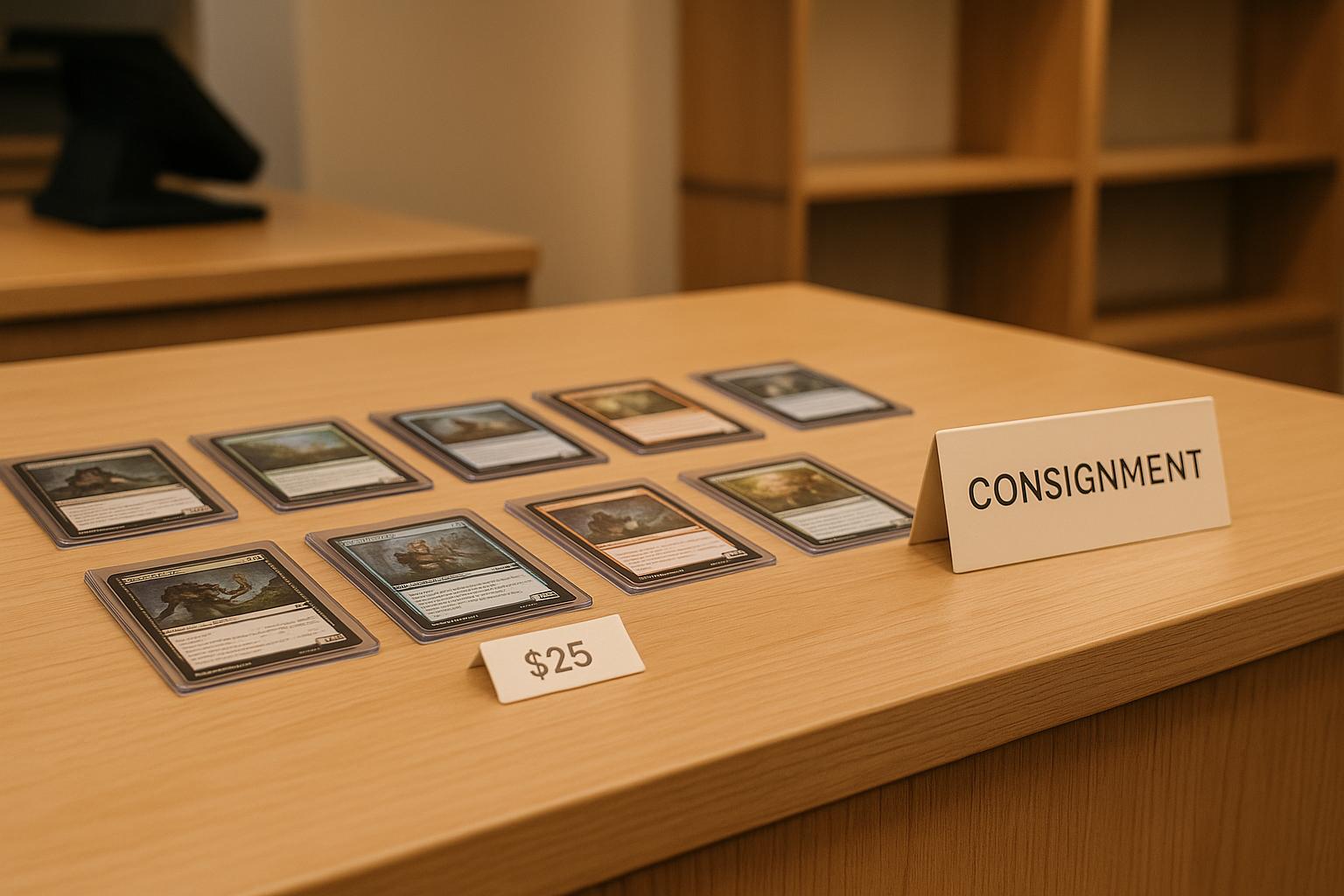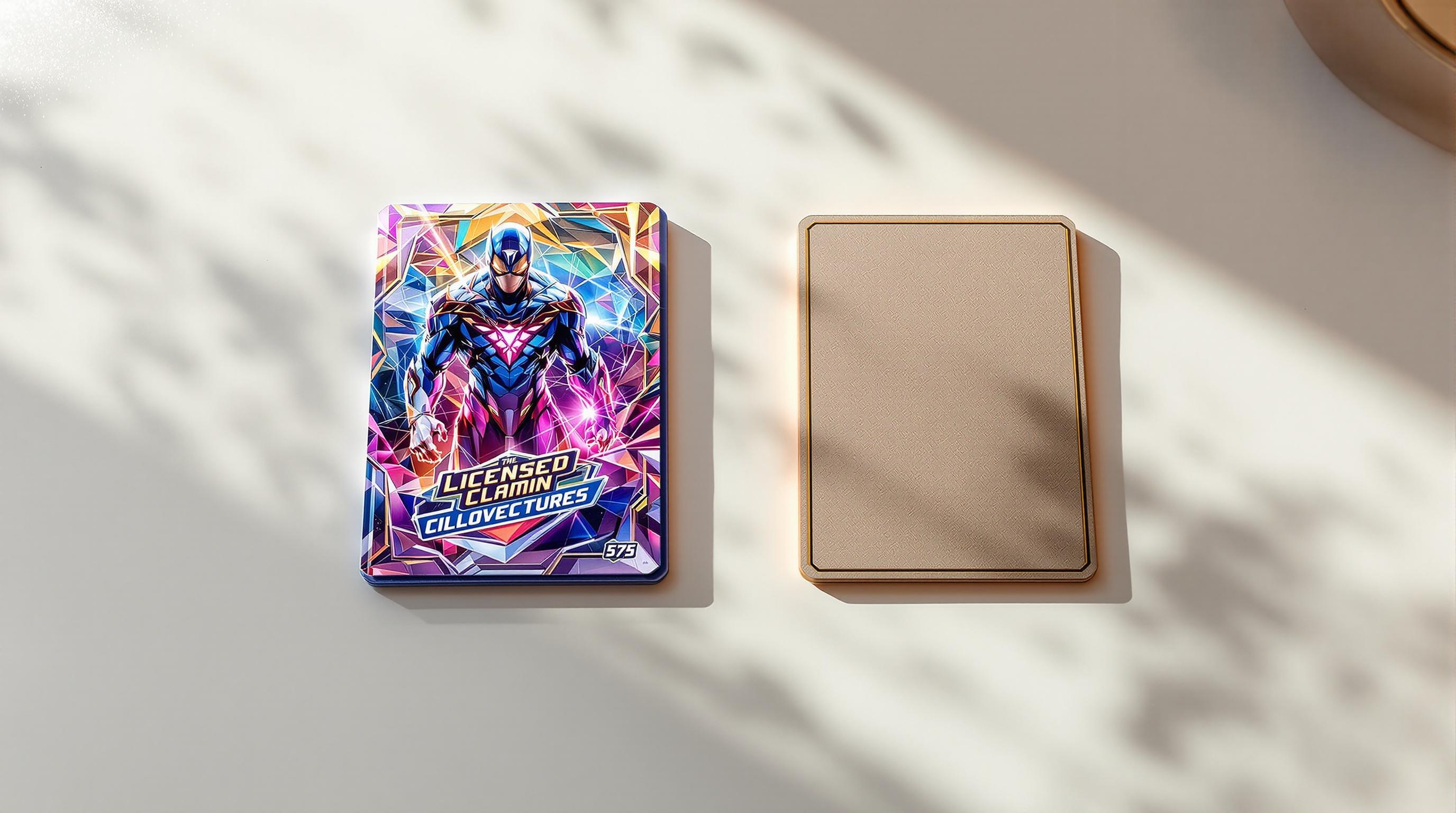Grading Pokémon cards can boost their value significantly, but not every card is worth the cost. Here's how to decide:
- Focus on Condition: Cards in near-mint or better condition (sharp corners, no scratches, good centering) are ideal candidates.
- Prioritize Rarity: Look for vintage, holographic, or rare cards like Secret Rares, Ultra Rares, and Alternate Arts.
- Check Market Demand: Cards featuring popular Pokémon (e.g., Charizard, Pikachu) or limited-edition prints often fetch higher prices when graded.
- Compare Raw vs. Graded Value: Only grade cards if the potential graded value exceeds the raw card price + grading fees.
Quick Comparison of Grading Companies
| Company | Strengths | Cost Range | Turnaround Time |
|---|---|---|---|
| PSA | Best for resale value | $50-100 | 2-3 months |
| BGS | Detailed subgrades offered | $35-50 | 1-2 months |
| CGC | Budget-friendly, fast | $25-30 | 2-4 weeks |
Grading protects your cards, authenticates them, and can increase their value - but only if the card is in excellent condition and has strong demand. Use tools like magnifiers or pre-grading evaluations to assess your cards before submission.
Important Things to Check Before Grading
Rarity and Card Condition
Look at the bottom-right corner of the card to identify its rarity. Symbols like a star indicate rare cards, a diamond means uncommon, and a circle represents common cards [1]. Next, carefully examine the card's surface, centering, corners, and edges - these are crucial for determining its grade. Use a magnifying glass to spot any imperfections that might reduce its value. Holographic cards require extra attention since their reflective surfaces make flaws more noticeable [2].
Market Value and Popularity
Check recent sales data on platforms like TCG Player and eBay to understand a card's market value and demand. Compare the prices of raw cards versus graded ones and evaluate transaction volumes to assess potential returns [1]. It's also helpful to study long-term market trends to decide if grading is worth the investment.
Certain cards, such as First Edition Base Set Charizard, vintage holographic cards, and limited-edition promos, have historically performed well when graded [1]. However, grading is usually only worthwhile for cards that are likely to receive high grades, such as PSA 9 or 10 [3].
Once you've selected cards with strong grading potential, it's important to familiarize yourself with the grading process to maximize their value.
How Grading Works and Why It Helps
Steps in the Grading Process
Companies like PSA, CGC, and BGS carefully examine Pokémon cards, focusing on surface, centering, corners, and edges. Each card is graded on a scale from 1 (Poor) to 10 (Gem Mint). Issues such as scratches, off-centering, or edge whitening can significantly lower a card's grade [2]. To ensure accuracy, cards are inspected under specialized lighting and magnification [2].
Holographic cards face stricter scrutiny since flaws tend to stand out more [2]. Cards that earn top grades meet high standards across all categories [3]. These grades directly impact market value - higher grades often fetch much higher prices [4].
Reasons to Grade Your Cards
Grading offers more than just a number. It authenticates cards, protects them in durable cases, and provides a standardized condition rating. This boosts buyer confidence and often increases the card's value [1][3][4]. For instance, while an ungraded Alternate Art Rayquaza card might sell for $130, a PSA 10 version can go for as much as $500 [4].
A standardized grading system also makes it easier to determine a card's true market value, leading to smoother transactions [2][3]. To maximize returns, submit cards in near-mint or better condition - lower-quality cards rarely see a significant value jump after grading [4].
To save time and money, consider tools like the Card Centering Tool for a quick pre-check before submitting your cards [5]. This can help you identify which cards are worth grading. Now that you know how grading works and why it matters, it's time to dive into selecting the best cards for submission.
How to Pick Cards Worth Grading
Vintage, Holo, and Rare Cards
When choosing cards to grade, prioritize vintage, holographic, and rare cards that tend to hold higher market value. Cards with labels like "Secret Rare", "Ultra Rare", or "Alternate Art" are often in high demand due to their limited supply and strong appeal among collectors [4].
Take, for instance, a 1st Edition Base Set Charizard. Its value can jump from around $1,900 ungraded to $16,270 as a PSA 10 [4]. This massive increase shows why older cards, especially from early sets, are excellent options for grading.
| Card Type | Key Factors to Consider | Potential Value Impact |
|---|---|---|
| Vintage (Pre-2000) | Original print quality, age-related wear | Highest return potential |
| Holographic | Surface condition, light tests | Medium to high value increase |
| Alternate Art | Centering, edge quality | High modern market value |
Comparing Raw and Graded Values
Once you've identified promising cards, the next step is assessing whether grading is worth the cost. Take the Alternate Art Rayquaza card as an example. It typically sells for $130 ungraded but can reach $500 as a PSA 10 [4]. That’s a 285% jump in value, emphasizing the potential benefits of grading.
To decide if grading is the right move:
- Check current prices for both raw and graded versions of the card.
- Account for grading fees, processing times, and the likelihood of a high grade.
"Cards in near-mint condition with minimal flaws are more likely to receive high grades and see significant value increases. Use tools like magnification and compare your card to grading company standards to assess its potential grade" [2][1].
Modern cards with exclusive features, such as limited print runs or tournament prizes, can also see value spikes when graded. However, not every rare card justifies the grading expense. Think about the card’s popularity and current demand in the market before making a decision [4].
Once you've selected the right cards, learning the grading process and submission steps will help you maximize your investment.
sbb-itb-0db97a5
Tips for Getting Pokémon Cards Graded
Picking the Right Grading Company
When it comes to grading Pokémon cards, the choice of grading company matters. The three top options - PSA, BGS, and CGC - each offer something different for collectors.
| Company | Key Features | Turnaround Time | Cost Range |
|---|---|---|---|
| PSA | Best for resale value | 2-3 months | $50-100/card |
| BGS | Provides detailed subgrades (centering, corners, edges, surface) | 1-2 months | $35-50/card |
| CGC | Quick service and budget-friendly | 2-4 weeks | $25-30/card |
If you're aiming for maximum resale value, PSA is the way to go. However, CGC’s quicker service and lower fees make it a great choice for newer collectors or those working with a tighter budget [1][4].
How to Submit Cards for Grading
To protect your cards during submission, place each one in a soft sleeve, then add a second sleeve for extra security. Finally, secure them in a hard toploader or card saver, following the specific requirements of your chosen grading company [2][3].
For multiple submissions, follow these steps:
- Document your inventory: Keep a record of every card you're sending.
- Securely package the cards: Use sturdy materials to prevent damage during transit.
- Insure the shipment: Protect your cards in case of loss or damage.
- Use tracked shipping: Ensure you can monitor the delivery process.
Finding Card Shops That Offer Grading
Local card shops can be a valuable resource for grading. Many offer bulk submission services, which help cut costs, and some even provide pre-grading evaluations to identify cards with the best chance of receiving high grades [2].
When visiting a shop, ask about:
- Discounts for bulk submissions
- Their pre-grading evaluation process
- Insurance and handling for valuable cards
- Past success rates with grading services
These services can help you focus on grading cards that are likely to get strong results, saving both time and money. With careful preparation and the right support, you can make the most of your card grading experience [1][2].
How to Get Maximum Value - What Pokemon Cards Should You Grade?
Conclusion: Decide Which Cards to Grade
Choosing the right Pokémon cards to grade can make a big difference in your collection's overall value. Research shows that grading the right cards, especially vintage and rare ones, can lead to noticeable increases in value [4].
When deciding which cards to grade, focus on a few key factors:
- Condition matters. Cards with sharp corners, clean surfaces, and minimal wear are the best candidates. Rare cards like Secret Rares, Ultra Rares, and Vintage Holos - especially featuring fan-favorites like Charizard or Pikachu - often hold the most value [2][3].
-
Market demand drives worth. Pay attention to current trends and prioritize cards with steady demand. Popular Pokémon like Charizard, Pikachu, and Mewtwo tend to deliver higher returns when graded [4]. Examples of high-demand categories include:
- Secret Rare cards
- Ultra Rare cards
- Alternate Art cards
- Vintage Holographic cards
Before submitting, compare the card's raw value to its potential graded value. Be sure to factor in grading fees and market trends [1][4]. Tools like the Card Centering Tool can help you assess your cards beforehand, saving you time and money [5].
Not every card is worth grading. Focus on those that strike the right balance between excellent condition, strong demand, and the potential for a meaningful increase in value [1][4].
With these tips, you're ready to make smarter grading decisions. Next, let’s tackle some of the common questions collectors have about the grading process.
FAQs
How Grading Affects Value
Grading can increase a card's value, especially at higher grades. Here's how different grades typically influence value:
| Grade | Value Impact |
|---|---|
| PSA 10 | 2-5x or more premium |
| PSA 9 | 1.5-2x premium |
| PSA 8 | 1.2-1.5x premium |
| PSA 6-7 | Minimal premium |
Important: If a card receives a lower grade than expected, its value might drop once grading costs are factored in [1].
Deciding If a Card Is Worth Grading
Only grade a card if its graded value is likely to exceed the raw card price plus the grading fees [1]. To decide, focus on these points:
- Condition: Check the surface, centering, corners, and edges [2].
- Market Research: Look up prices for similar cards with the same grade [4].
Tools like the Card Centering Tool or pre-grading evaluations at local card shops can help you estimate a card's grade before sending it in [2].
"If the minimum grade you think it will get is worth more than the cost of the card raw PLUS the cost to grade then it might be worth it to grade." [1]


